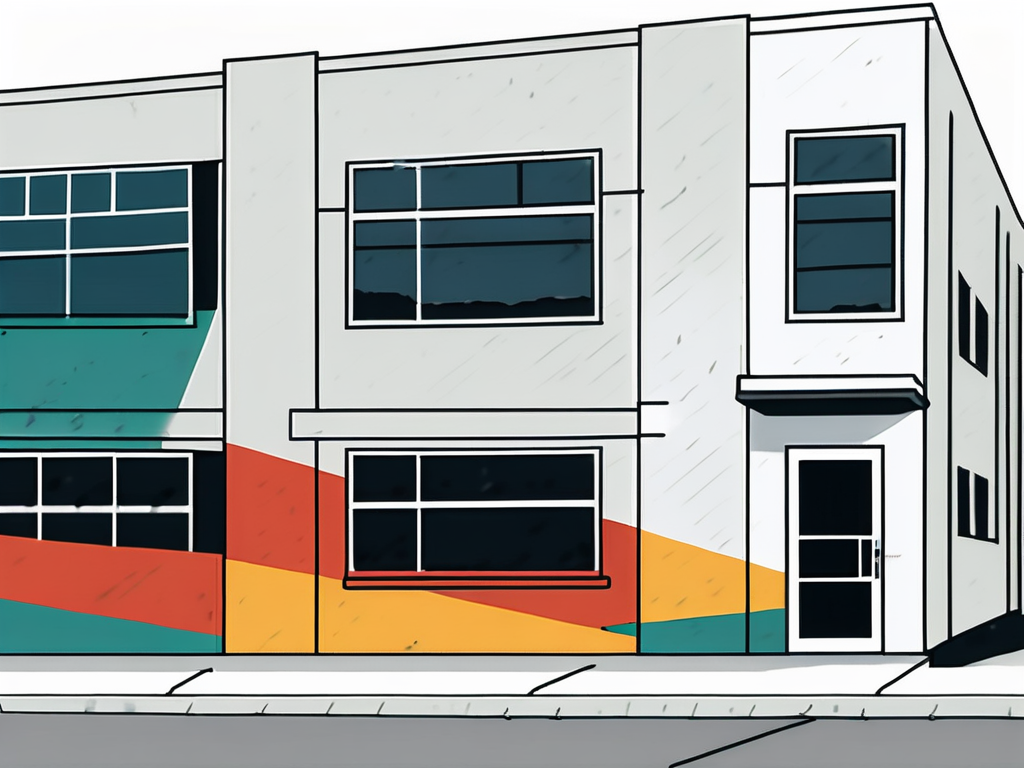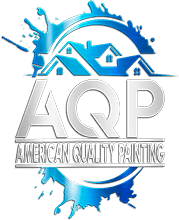In the field of commercial painting, understanding and adhering to Ohio’s building codes and regulations is crucial for ensuring safety, quality, and compliance. This article explores the various aspects of these codes, their significance in commercial painting, and the evolving nature of regulations in Ohio.
Understanding Ohio’s Building Codes and Regulations
Ohio’s building codes establish a framework for all construction and renovation activities within the state, addressing issues ranging from structural integrity to energy efficiency. These codes are essential not only for new constructions but also for renovations, making it imperative for commercial painting professionals to keep them in mind.

The Importance of Compliance in Commercial Painting
Compliance with building codes is not just a legal obligation; it symbolizes a commitment to safety and quality. In commercial painting, failure to adhere to these standards can lead to structural issues, safety hazards, and even legal repercussions. By following building codes, painters also protect their reputation and maintain a level of professionalism that clients expect.
Moreover, compliance can enhance a painter’s marketability. Clients are increasingly aware of the importance of adhering to regulations, and they often seek out contractors who demonstrate a thorough understanding of local codes. This can lead to more business opportunities and the potential for higher-paying projects, as clients are willing to invest in quality workmanship that meets all necessary standards.
Key Aspects of Ohio’s Building Codes
Ohio’s building codes cover a wide range of topics, including fire safety, accessibility, structural requirements, and environmental considerations. Notably, codes can vary significantly between municipalities, making local knowledge essential for commercial painters.
Key aspects include:
- Fire code provisions that dictate the use of non-combustible materials in certain areas
- Accessibility standards that require compliance with the Americans with Disabilities Act (ADA)
- Energy efficiency standards that specify the types of materials and methods to be used
In addition to these key aspects, Ohio’s building codes also emphasize the importance of sustainability. The state encourages the use of green building practices, which not only help in reducing environmental impact but can also lead to cost savings in the long run. For instance, the incorporation of energy-efficient paints and coatings can significantly lower heating and cooling costs for commercial properties, making it a win-win for both the environment and the business’s bottom line.
How Building Regulations Impact Commercial Painting
Building regulations influence various aspects of commercial painting, including the selection of paint products and the methods used for application. Regulations may specify low-VOC paints for environmental reasons or restrict certain chemicals to ensure safety for both workers and the public.
Additionally, contractors are often required to incorporate certain features, such as environmentally-friendly materials or specific safety measures, into their projects, all of which can affect timelines and budgets.
Understanding these regulations is crucial for painters, as non-compliance can result in costly fines and project delays. Furthermore, staying informed about updates to building codes can provide a competitive edge, allowing painters to offer clients the latest in safety and efficiency standards. By investing time in education and training regarding Ohio’s building regulations, commercial painters can position themselves as experts in their field, ensuring that they not only meet but exceed client expectations.
Navigating the Specifics of Commercial Painting Regulations
Navigating the nuances of commercial painting regulations in Ohio requires careful attention to detail and a thorough understanding of the codes applicable to each project. Failure to do so can result in costly oversights and delays.
Paint Selection and Ohio’s Building Codes
When selecting paint for commercial projects, contractors must consider not just the aesthetic aspects but also regulatory requirements. Ohio often promotes the use of water-based paints and low-VOC options to minimize environmental impact and ensure indoor air quality.
By being knowledgeable about the specific codes regarding paint selection, commercial painters can show their commitment to both compliance and environmental stewardship. Additionally, understanding the differences between various paint finishes—such as matte, eggshell, and gloss—can help contractors make informed decisions that align with both regulatory standards and client preferences. This attention to detail not only enhances the visual appeal of the project but also ensures that the chosen products meet durability and maintenance expectations.
Safety Standards for Commercial Painting
Safety standards are a vital component of Ohio’s building regulations, encompassing proper protective gear, equipment safety, and adherence to OSHA guidelines. Commercial painters should be trained in these standards to minimize risks on the job. Compliance with OSHA regulations helps ensure that both workers and the public remain safe during the painting process.
Furthermore, it’s crucial for painting contractors to conduct regular safety audits and training to maintain high safety standards on every project. This proactive approach not only fosters a culture of safety within the team but also significantly reduces the likelihood of accidents and injuries, which can lead to costly legal issues and project delays. Implementing a robust safety program that includes regular drills and emergency response training can further enhance the overall safety of the work environment.
Environmental Considerations in Commercial Painting
Ohio’s regulations increasingly focus on environmental considerations, dictating how waste is managed and what materials can be used. Commercial painters must be aware of waste disposal regulations and strive to use eco-friendly products whenever possible.
Incorporating sustainability into commercial painting can attract clients who prioritize environmental responsibility, thereby enhancing a business’s reputation. Moreover, adopting practices such as recycling paint containers, utilizing biodegradable cleaning agents, and implementing efficient waste management systems can significantly reduce the ecological footprint of a painting project. By promoting these sustainable practices, contractors not only comply with regulations but also position themselves as leaders in an industry that is increasingly leaning towards environmentally conscious solutions. This forward-thinking approach can lead to long-term benefits, including cost savings and a loyal customer base that values sustainability.
The Role of Professional Painters in Ensuring Compliance
Professional painters play a critical role in ensuring compliance with Ohio’s building codes. Their expertise not only guarantees that projects meet all regulations but also helps clients navigate the complexities of these requirements.
Hiring Licensed Commercial Painters
Choosing licensed commercial painters is one of the most effective ways to ensure compliance. Licensed contractors are knowledgeable about local building codes and are committed to maintaining high standards in their work. They understand what is required at every step of a painting project and can recommend solutions that meet regulatory standards.
Moreover, licensed professionals are more likely to carry appropriate insurance, which adds an extra layer of protection for clients.
The Benefits of Professional Compliance
Engaging professional painters ensures compliance with Ohio’s building codes, which can save businesses from potential fines and legal issues. By employing experienced painters who understand the local regulations, companies can also achieve improved project efficiency.
In addition, working with professionals enhances the overall quality of the paint job, ultimately leading to greater client satisfaction and long-term relationships.
Avoiding Penalties and Fines Through Compliance
Non-compliance with building codes can lead to significant penalties, fines, and delays that can be detrimental to a business. Ensuring compliance from the outset is a strategic move. By remaining informed and adhering to the regulations, commercial painting professionals can avoid unexpected financial liabilities and reputational damage.
Investing time and resources into compliance pays off in the long run, as it fosters trust with clients and ensures smoother project completion.
Future Trends in Building Codes and Commercial Painting
As building codes continue to evolve, commercial painters must stay ahead of the curve to maintain compliance. Anticipating future trends can position a painting business as an industry leader.
Anticipated Changes in Ohio’s Building Regulations
Future changes in Ohio’s building regulations are likely to focus on sustainability, technological integration, and safety improvements. As more cities adopt stricter environmental standards, commercial painters must prepare to adjust their practices accordingly.
Anticipating these changes allows businesses to implement proactive measures, ensuring they remain compliant while meeting client expectations.
Adapting to New Standards in Commercial Painting
To thrive in a continually evolving regulatory landscape, commercial painters must be adaptable. Regular training, workshops, and staying informed about new regulations can significantly benefit professionals in this field.
Embracing new standards and innovations not only helps with compliance but also improves the quality and efficiency of work performed.
Staying Updated on Building Codes and Regulations
It is essential for commercial painting contractors to regularly review and update their knowledge of Ohio’s building codes and regulations. Engaging with professional organizations and attending local government meetings can facilitate access to the latest information.
By fostering a culture of continuous learning and awareness, commercial painters can not only ensure compliance but also enhance their service offerings, positioning themselves as trusted allies in the construction industry.

